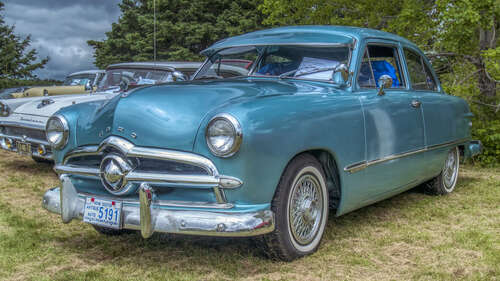
Ford would sell over a million vehicles in 1949. In part, that success came from an innovative business strategy for the time: marketing to women. Early ads capitalized on social trends like suburbanization and the Baby Boom that had more women driving more miles than ever before, pitching the car as equally suited for working women and domestic errands. Other carmakers followed suit; in 1955, Dodge introduced a version of the Custom Lancer called the La Femme that had a pink and white color scheme and came with an umbrella, raincoat, and makeup kit.
Pandering aside, the research and development process for the 1949 Ford was intensive and the result was striking: At the time, Newsweek called it the most radical redesign Ford had attempted since the Model A. Ford describes the 1949 as “the vehicle that saved Ford Motor Company,” both for its sales numbers and because it set design trends that carried on well into the following decades. But the ’49 Ford’s origin story is nowhere near as smooth as its rounded front end.
Bob Gregorie’s initial design was deemed too large and expensive by Ford execs, so that car became the 1949 Mercury. Ford then brought in an outside firm led by George Walker, who would later go on to design the classic 1950s Ford Thunderbirds. Walker’s team raced with Gregorie’s to come up with a new design, but neither was having much luck until Walker brought in former Studebaker designer Richard Caleal.

